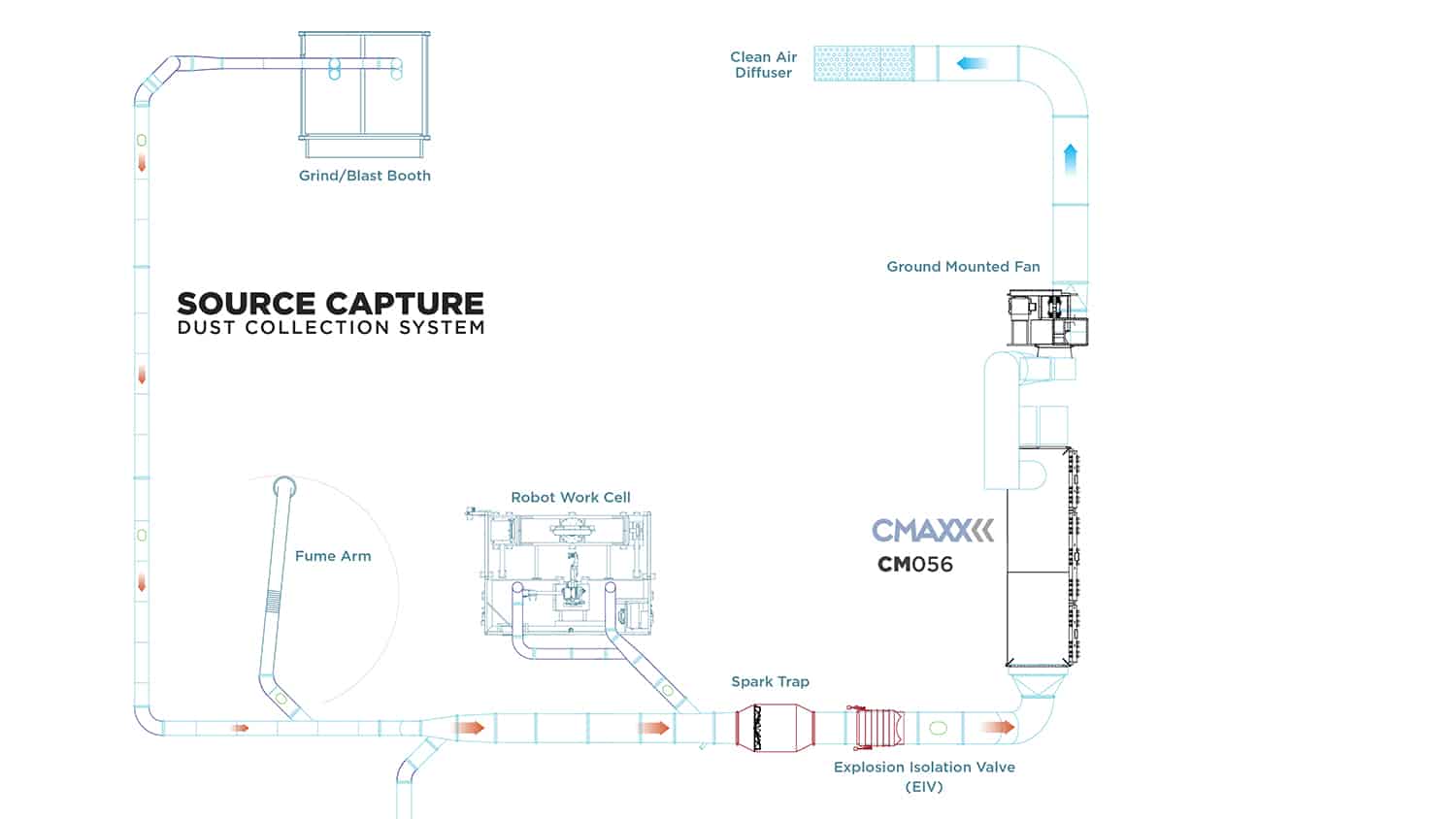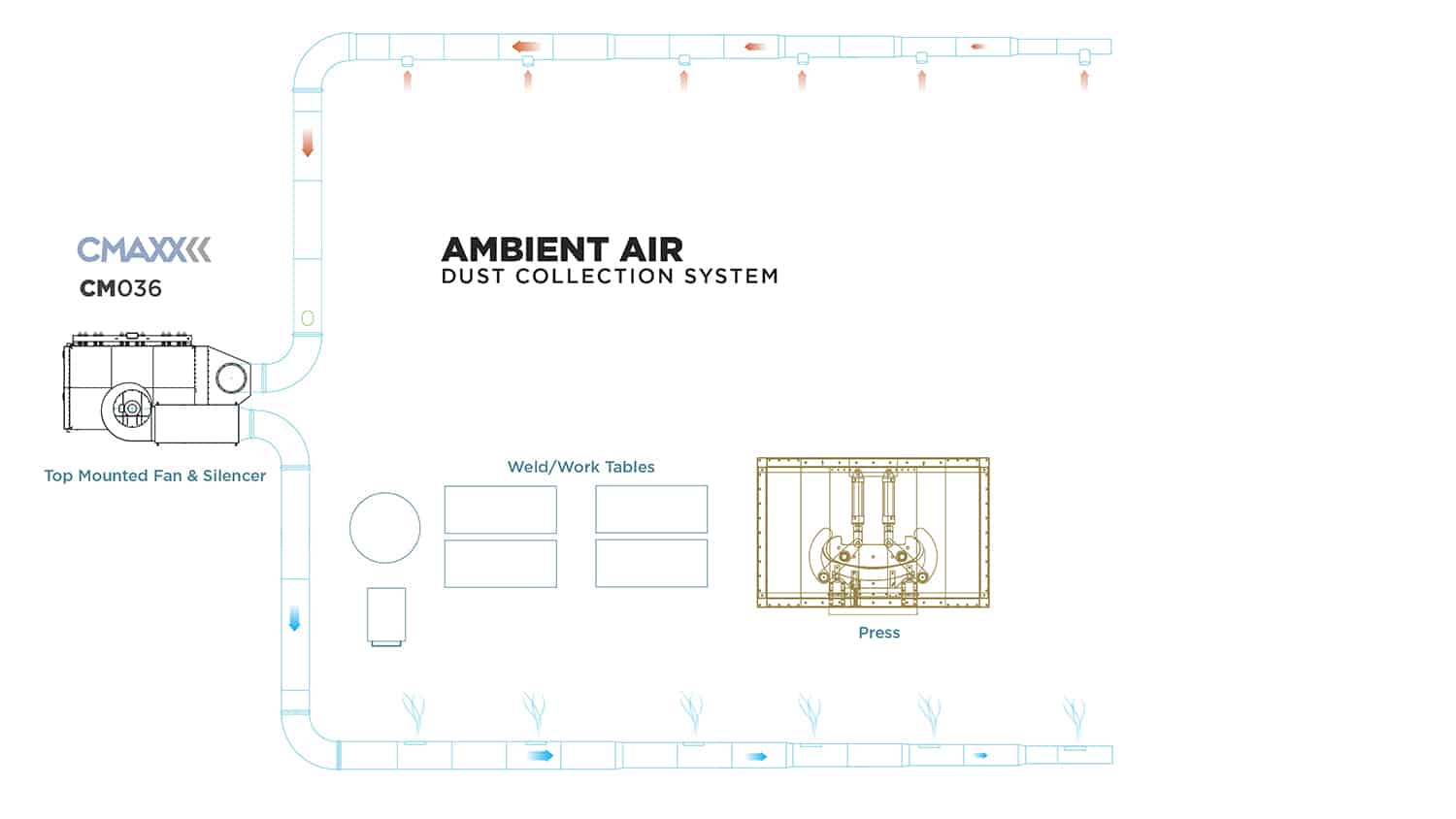If your company is following the principles of lean manufacturing, is your dust collection system keeping up? Lean is everywhere, eliminating waste and improving processes. However, many companies trying to find lean solutions haven’t taken a look at that ancient baghouse rusting away behind the building. Can you apply any of these lean solutions for dust collection?
In our last post we talked about an efficiently running dust collection system, and how this reduces waste and saves time and money. This time, we’re going to look at the system design and see whether yours is as lean as it could be.
SITUATION 1:
You have several pieces of equipment in your building that generate dust. The equipment doesn’t move around, and most of the dust or fume is generated at a particular point. Examples can be a plasma or laser cutting table, a blast booth, a mixing machine, or many others.
The leanest solution for this situation would usually be source capture. Hoods can be located directly over the equipment, or the equipment can be designed with dust collection built in. An example of this is a downdraft system on a plasma cutting table. These lean solutions for dust collection make sure the dust generated at certain spots doesn’t get out into the rest of the area.
SITUATION 2:
In your facility, welders and fabricators work on assembly of large steel items. The workers usually move around the piece they’re working on. It’s not practical to put hoods over the entire area: the sources of the dust and fumes are moving around, and you would need too many hoods. This would require a huge amount of air flow and huge fans, which is not efficient.
In this situation, the best lean solution for dust collection might be an ambient system. This type of system filters the air in the entire area. It is designed to change over all of the air inside that space within a certain period of time. As it does this, it removes dust and fumes, even if the sources are moving around and can’t be put under a hood. It will keep all the air clean, not just the air around particular machines or work areas.
SITUATION 3:
You have a machine shop with welders and fabricators working on different equipment at different times. Some of the machines might have hoods over them, and the cutting table might have a downdraft system on it. These are examples of source capture.
Another type of source capture often used in these situations is a fume arm. This flexible arm is situated near the welder, and he adjusts it as he works to capture the fumes. He needs to keep the hood of the arm positioned correctly so it’s catching the plume coming from the welding.
While in theory this is an effective method of source capture, it is not a lean solution for dust collection. Time is spent repositioning the hood. Welders deal with the issue of having the hood in the way of the work area, slowing down the process. It is difficult to position the hood correctly for maximum efficiency. These all create wasted time, worker frustration, and inefficient fume collection. The end result: the fume arms don’t get used, and your system is wasting airflow because it’s not collecting anything at those points. Check out the article where Imperial Systems Inc. President Jeremiah Wann tackles this issue directly. Click Here.
In this situation, your system may be able to do double duty as an ambient and source capture system. You can still have the dust collector attached to the cutting table for downdraft fume collection, and hoods over stationary work areas. However, you need a lean solution for dust collection from your welding or similar work areas.
Having ambient dust collection makes sure that the air in the entire facility is clean. It’s often said in lean manufacturing that the best solution is the one people will actually use. Considering that fume arms are often used wrong or not used at all, they’re not the best lean solution.
For each company or workplace, there are lean solutions for dust collection, but they are different for each situation. Contact us to talk to one of our systems specialists and figure out the leanest way to handle your dust collection.




